When entering your favourite game store, you’re greeted by the past, present and future. Empty cases of upcoming games, new titles wrapped in plastic and older boxes hoping for a second chance at a discounted price. Yet, what if you were to look at those discarded titles and notice they were all the same game…
… what would that tell you?
March 2001 saw the release of Zone of the Enders, directed by Noriaki Okamura, written by Shuyo Murata and, perhaps most famously, produced by Hideo Kojima. Fame is not always enough to elevate an idea to a profitable product however and as such all copies of Zone of the Enders were bundled with a demo disc for the highly anticipated Metal Gear Solid 2: Sons of Liberty.
The end result? A game that sold 800.000 copies upon its debut. Yet, according to conflicting sources, it was also a game that suffered between 40% and 72% copies returned. “Even so,” started producer Kojima “800,000 copies, for a new original game, is a great success”. And as such they started looking into a sequel.
Now that the title was established and the public’s interest apparently low, there would be no safety net, no title or fame to carry it on its back. They would have to wonder why the games were returned and fix it. This was it. Go big, or go home knowing they could’ve done better.
The Beginning
The gameplay of the original Zone of the Enders could be described as a mecha fighting game akin to Sega’s classic Virtual On series and Namco Bandai’s Mobile Suit Gundam titles. Players are able to move the Orbital Frame entitled ‘Jehuty’ in every direction both up and down and circle around enemies in mid air and use a few basic attacks, block, dodge, grabs and special moves to beat the enemy. Because Jehuty would automatically choose between its ranged attacks and close-combat attacks depending on whether or not you were within range of the foe, players could fully focus on their mobility with most of their offensive moves being relegated to only a single button.
Progressing through the game saw Jehuty gain new weapons like a sniper-shot, while slain enemies granted experience, making lower level foes easier to kill. Once players finished the 3 hour game they could dive into Versus Mode, where they could duke it out against each other; a nice bonus! The massive return of copies told the developers that this wasn’t enough though. Hence, they looked to single out what worked… and what didn’t.
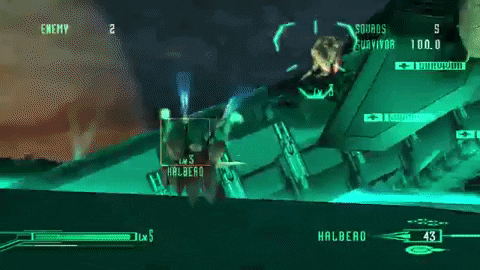
Most importantly, they noted that it was fun to control Jehuty. On the flipside, the gameplay was described by critics and players alike as tedious and boring. Its missions, ranging from elimination, exploration and at times even backtracking through the game’s single location disappointed many players.
Feeling that the base of the game, the movement, was already set, Kojima noted that the needed changes were thus more in the details and the vision surrounding the gameplay. To make these changes possible, he felt the game would benefit from a new director for a fresh perspective, and after long debating appointed writer Shuyo Murata for this task.
Reflecting on this shift, director Murata said that his first step towards designing the sequel was to play many modern games. From this research he recalls that most were “extremely tiresome and tedious”, including the first Zone of the Enders. To counteract this, he and the team aimed to have the title feel as it came from the next generation – the consequences be damned.
Bigger, better, faster
When Anubis: Zone of the Enders, known as The Zone of the Enders: The Second Runner in the West (from here-out called ZoE2), launched Februari 2003 players would find out if this directorial shift was successful.
The game starts off akin to its predecessor with a slow 6 minute video introducing us to Dingo Egret, an ex-pilot who is forced back into an uprising against the organisation named Bahram. The game then immediately subverts expectations by flipping the script and putting players into combat for a solid hour.
While the general purpose of Jehuty’s buttons and actions remain the same, fights immediately see you face off against numerous enemies at once in large open spaces compared to the original’s more claustrophobic one-on-one duels. Jehuty’s speed and mobility also greatly increased.
This increase in scale and speed shows itself in numerous other ways as well. No longer does the game take place in a single space station. Instead it sees protagonist Dingo pilot Jehuty from an ice-covered planet, to a space station, canyon, city, railway, lava filled factory, underground laboratory and a moon in less than three hours of gametime.
The changes such as the next-generation feeling in terms of Jehuty’s speed, the game’s variation and scope mean little though if the enemies don’t evolve with it. Looked at from afar, ZoE2 only offers a small selection of enemies just like its predecessor. Raptors are your basic fodder enemies while Narritas dash around firing homing projectiles. Brutish Cyclopes try to get in close and Mummyheads aim to lock Jehuty down with their lasers while also trying to heal their damaged allies.
Used by themselves these foes would quickly result in repetitive fights yet it doesn’t take long for ZoE2 to start combining enemies together, mixing up both their composition but also the location to make old fights interesting again. To illustrate this, click the greybar below for a short description of every fight in the game.
All fights analyzed
Ice World
- First fight is a generic tutorial fight to get (re)used to the controls.
- Second fight is one against a sawrm to (re)learn the homing attacks.
- Third fight is against both at once, like an exam, while also allowing you to practice lock-on.
- Third fight is against two lone enemies but very enclosed
- Fourth fight is the Nephis boss which includes parries, shield breaks, blocking projectiles and introduces the ‘red marker’ indicating when bosses are open.
Bahram Ship
- First fight is an introduction to Spiders with an ambush (first ambush mid fight)
- Second fight is against a lone cellar, introducing the spawns and also pillars as usable item
- Third fight is against another cellar with the mummy. You start ambushed as well.
- Fourth fight is the pillars-boss.
- Anubis shows up, being a supposed to lose fight (only one in the game)
- Then you have the first Cyclopse fight in a long hallway with another ambush near the end.
- Then a Cellar, upping the difficulty with more Cyclopses and Mummies. Forcing you to learn how to multitask
- Then the ‘boss’ Cellar with every enemy type up until now, all at once. Fantastic.
- Then a puzzle encounter where you need to find Taper
- Then an escort mission with Taper
- This fight ends with the first fight against a ‘commander’ where you can experiment with Geyser since regular commanded units are hard to grab
Mars
- First is a Narrita fight in a wide open space, allowing for lots of cover and smart positioning.
- Then the boss (nothing special imo)
- Then another encounter, now with Gauntlet and an optional 90 second timer. This is also one of the few open areas with a lot of EX tokens.
- Canyon is an endurance round that heavily promotes close quarters combat and collisions as well as meter management
- The boss is a puzzle
- The second one is also a puzzle, but both also reward smart positioning and gauntlet use
City, Train, Powerplant
- Your first protection mission where you have to protect the town
- The train fight is your first and only real timed encounter where, unlike before, running out means dying.
- The Viola boss is the last one and puts all her previous puzzle elements together
- The Nephis boss is the original but with twist (have to parry)
- You then get another escort quest, but instead of going horizontal (Taper) it is vertical with a pit of death at the bottom should she drop in it.
Secret City
- First is a puzzle encounter where you need to listen to commands to navigate the arena, this is an introducion to the later Inherit boss where you need to listen to commands to survive. Fun concept.
- The ‘city’ is the first and only open world area where you can explore and fight at your own leisure. There’s even an optional Sub Weapon to find.
- The pillars encounter is the final fight honestly, where you’re given everything at once. Every enemy type, combat on all planes (horizontal and vertical), cellars at the bottom, long stretches, collision damage, crushers – it’s all here. The only thing missing is a timer and an escort, but thankfully they weren’t that sadistic.
- Inheret is a boss following up on a previous concept as noted.
- The second Anubis encounter is a twist on ‘supposed to lose’. You have to deal a certain amount of damage. Already forcing players to learn his attacks a bit.
Sky
- The battleships are a cool unique encounter, just lots of visual spectacle that heavily features the Vector Cannon.
- Zakat is another puzzle boss (my favourite mind you).
Aumann
- Crevacce is a combination of the protection mission, an escort mission and a combat scenario rolled into one.
- The long hallway afterwards is the ‘super area’ where you’re extremely powerful and can go on a power fantasy for a bit.
- Anubis1 is a joke boss that allows you to feel out Zero Shift a bit and get some revenge.
- Anubis 2 is a full on boss featuring Zero Shift
- The Aumann level is a tutorial stage for Naked Jehuty so that you can feel out his strengths and abilities
- The Viola fights are a power-fantasy fight, and the only one that feels a tad redundant. Though you could argue that before with V2 Jehuty you were easily killing regular enemies. And now you’re OHKO’ing bossfights, which is another step up. Also allows for some farming before the final boss which is noteworthy.
- Anubis 3 is the final boss
While a lot to take in, one can already imagine how these changes impact the flow of the game. Weak Raptors are more impactful and a Mummyhead’s easily dodged laser is a threat to your positioning. Fights become an increasingly amped up adrenaline rush of prioritizing foes, juggling ranged and close-up combat, not to mention the occasional environmental hazard. This forces the player to quickly make decisions on the fly, in part due to their high aggression.
Seeing foes work together and compliment each-other in such a fashion – no matter how basic – is rare, even in some of the best action games like Ninja Gaiden and Devil May Cry. Additionally, through its short runtime it avoids the pitfall of having fights grow too big, where all nuance is lost in its big swarms, as seen in titles like Doom Eternal.
This is further compounded on how enemies can be used against each-other as well. A damaged enemy is a healing priority for a Mummyhead, allowing Jehuty to safely grab him in the act. When grabbed, the player can then throw them into the environment for bonus damage, use them as a battering ram into foes, as a shield against enemy attacks or as a melee weapon to kill two orbital frames with one giant futuristic stone.
This interplay between Jehuty, the enemies and the environment starts to appear more and more as one plays more. Meter-usage abilities like Geyser stun foes, making them glow brightly and all who touch them are also stunned. So what if you were to grab a ‘geysered’ foe and hit enemies with them? The result is an immediately stunned enemy, opening block-happy enemies up.
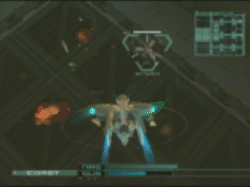
Comet 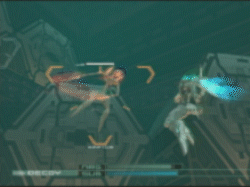
Decoy 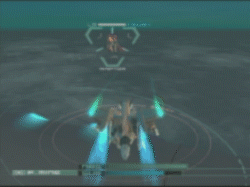
Floating Mine 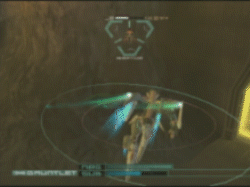
Gauntlet 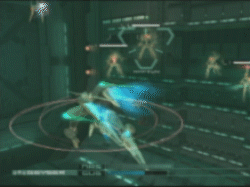
Geyser 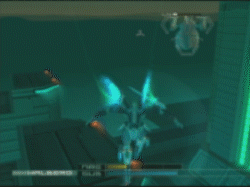
Halbert 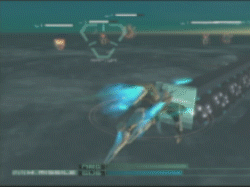
Homing Missile 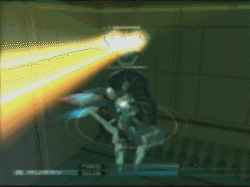
Mummy 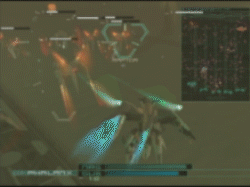
Phalanx 
Vector Cannon 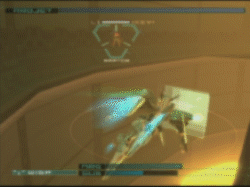
Wisp 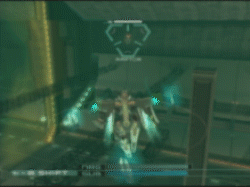
Zero Shift
Other sub-weapons work in tandem like this as well. Players can for instance lay down decoys to draw attention from enemies but they can also lay down mines. What if you’d put down a mine within a decoy? Or what if we pick up the mine and use it as a melee weapon? There are a lot of possibilities.
Boss Fights operate slightly differently however, with each fight being more of a puzzle that has to be solved. They still allow for some creativity however. Ardjet’s shield has to be drained by destroying her drones for example, but clever players can slam her into the surrounding glaciers for bonus damage. Meanwhile Viola AI sees players run and hide from her Coffin Laser unless a Decoy is used to make her miss her mark. On the other hand, these bursts of creativity rarely reach the freedom offered in the game’s regular engagements.
Interactivity and interplay between the enemies, Jehuty, his abilities and the environment are constantly at play to keep the combat interesting and engaging.
This is interesting however, as when asked about the difference between himself and Murata, Koijma noted that Murata saw 1+1 as only being 2. While Kojima himself felt that he went further by also seeing 3-1 as 2, and 7-5 or 0.5+1.5 etc. Perhaps this is true on the surface level and especially in the boss fights like Metal Gear Solid 2’s Fatman by offering so many microdecisions for such an outwardly simplistic fight. Murata’s work however focuses more on the microdecisions in the smaller engagements and their variation.
To use Kojima’s own analogy: in the eyes of ZoE2, 1+1 isn’t just 2, there’s also 4+2 being 6 and 5+2 being 7. Each fight offers something new by combining foes in unique ways, changing the level geometry or giving a fresh objective. It is somewhat ironic though that the result was a game that was much more open ended in its gameplay and is way more linear in its exploration and plot compared to its predecessor.
The Highest Level
After beating the game, players can dive into Hard Mode which raises a few enemy statistics. The game also offers ranking-and scoring systems, though its lack of transparency on how players are ranked and the otherwise easily exploitable scoring system slowly lead to a game without a lot of staying power; and most importantly, without a motivation to experiment.
However, in 2003 games saw a different release schedule world-wide than at the time of writing. This would often lead to European releases having minor changes or patches, such as numerous exploits being removed from Metroid Prime’s European release and Metal Gear Solid 2 getting new difficulty modes designed based on the feedback of the initial release.
The same happened to ZoE2 with Europe being graced with The Zone of the Enders 2: Special Edition in september 2003, nearly half a year later than Japan. A version that wasn’t released in Japan until a year later and never even made it state-side.
This re-release saw some added bells and whistles; a new intro video, some extra fights inserted into the story and a more indepth training-mode. Most importantly however was a revised difficulty system, offering extra modes for players to dive into while also expanding upon the mission mode. The newly added Very Hard and Extreme modes focussed on upping enemy aggression and changing up attack-patterns.
That last part is especially interesting. Unlike titles such as Ninja Gaiden Black or even their own Metal Gear Solid 2, where the added difficulty modes were more about preserving knowledge and using it in harder situations, Zone of the Enders’s new difficulties put a focus on knowing how to operate Jehuty in more dangerous and changing situations. A boss whose laser once could easily be dodged by dashing to the left, now required a complicated pattern to avoid or smart usage of a sub-weapon. Enemies now also really rush Jehuty down, even more than before, rivalling the pressure on the player given by titles like Ninja Gaiden II and Vanquish. On Extreme players were already hitting major roadblocks as early as the first fight, being thrown around and into walls as the highly aggressive enemies crushed them where they stood.
It is with this difficulty push that one is urged to dive deeper into the combat mechanics to get past said road-blocks. A Cyclops would, after throwing his cyclonic punch, always drift for a few seconds before rushing towards the player, creating an opening for a charged shot to kill them instantly. Subsequently, a Mummyhead will always try to shoot you down with rapid fire attacks if the player is going for a grab. You could circumvent this; they would always prioritize healing a fellow orbital frame when past 50% hp. This makes them docile and open to grabs once again.
As such fights became more about changing the state of the enemy with your tools, while staying out of harm’s way and using resources smartly. Some enemies like Raptors for example will clash blades with you on Extreme when attacked head on. In a fun twist, clashing restores some meter to you, allowing you to keep up the pressure on other foes with your sub weapons. Again the interplay at work.
Lastly players had to improve upon Jehuty’s mobility, zooming around the battle while at times struggling with the lock-on function. The camera, a holdover from ZoE1, still only recenters when you stop moving. This was fine in that slower game but has big problems in the sequel’s larger and faster fights. The same goes for the lock-on having to swap between one target at a time. Manageable in a small fight, a nightmare in larger engagements.
Aside from the lock-on problem, the game has many little other quirks that might annoy players depending on their preference. Grabbable items like poles cannot be carried from room to room for example. And while the game desperately tries to mix the gameplay, certain sections like finding a cowering Taper or navigating an invisible mine-field can be a chore on an initial playthrough, while on subsequent runs players will just rush past them. Similarly some weapons will barely see use on said initial run with something like the Floating Mine being given right before the end while the Vector Cannon is given to you hours before you can actually feasibly use it.
Subsequent playthroughs allow usage of different costumes, but each one is more overpowered than the last, offering anything from infinite-meter to a monstrous 500% damage bonus on your attacks. Even the suit intended for challenge runs sports an infinite meter to use, making every fight a breeze.
The most egregious however is the game’s performance. In their attempt to turn it into a next generation title, the game can drop from 60 frames per second to nearly 30 in some of the game’s more intense setpieces, making for an inconsistent experience.
The HD Age
Thankfully, the seventh generation of consoles saw a trend of re-releasing games in High Definition, usually in an attempt to reinvoke popularity, gauge interest or perhaps promote an upcoming game. The Zone of the Enders was no exception to this, and with a nod to its origins, The Zone of the Enders HD Collection released in 2012 for Playstation 3 and Xbox 360, bundled with a demo for the anticipated Metal Gear Rising: Revengeance. This version would allow the developers to iron out the game’s technical shortcomings while also giving American players access to the European exclusive content.
Sadly, despite being pushed as a promotion for the recently announced Zone of the Enders 3, the HD Collection appeared rushed. Not only was the frame-rate decisively worse, going as low as 18 frames per second, various graphical effects were also absent, loading times were increased in length and even certain enemy AI was accidentally changed.
In an attempt to salvage the release, Konami hired external company HexaDrive to patch the game. By focusing on just the Playstation 3 version they managed to up the performance, making Zone of the Enders The Second Runner run stable for the first time in history albeit still with some hitches and missing effects. This patch didn’t release until seven months later however, at which point sales had dwindled and people had moved on.
Years passed and interest in the series waned while in the interim many of the staff surrounding the series would leave Konami with directors Murata and Koijma seeking pasture elsewhere.

It wasn’t until mobile-game company Cygames came around that the series would see a chance at life again. Its President, Watanabe Kouichi, was a “huge fan of the game”, as were some of its employees. From an act of passion they approached Konami with a simple proposal: let us rebuild this game for a modern generation.
While originally hesitant to have a mobile-game company handle one of their IPs, Konami was eventually swayed by Kouichi’s love and respect for the title. So, what started as a simple 4k-resolution port for the Playstation 4 slowly spiralled into a title with VR support and many other bells and whistles entitled The Zone of the Enders The 2nd Runner M∀RS, released in 2018 for the Playstation 4 and Personal Computer. Some of the extras included a new mini-game, a hanger to explore in first-person, unlockable art-work with some previously unseen pieces, a model viewer, theater to rewatch cutscenes and more; the title clearly being a labour of love for the source material.
It’s important to note that, while mechanically Zone of the Enders is an excellent game, there are multiple audiences attracted to the title. Those that enjoy the plot, players that seek the combat thrills but also fans of the mecha sub-genre, as evident by its detailed model kits for most of the Orbital Frames and why additions like a VR-mode isn’t so strange.
That isn’t to say the main game didn’t see some changes though. It now features an alternate control scheme that allows for on-the-fly sub-weapon switching, which used to be relegated to a pause-menu. And perhaps most importantly, the game now also sports an active radar, allowing players to have a better oversight of the battlefield without having to pause. As a whole one could call this the definitive version of the game to play.
In a way then, it is sad that it took nearly 15 years for ZoE2 to get a stable release. Especially for a game that, despite having worked so hard to make a name for itself, continued to be neglected and had to resort to bundles with more favourable games to be noticed. It is regrettable that an action title with such a focus on depth over complexity is so unknown to players at large.
While an animated film and handheld game exist, the franchise has remained mostly dormant since, with the third game being cancelled as well. And though Cygames has expressed interest in continuing the franchise, one can wonder how far their passion will carry them. There’s a difference in polishing a gem and making one yourself. One can hope that they, or perhaps Kojima’s new Kojima Studios, which houses much of the original talent, are looking towards the series’ future. Be it with its familiar name or a spiritual successor, time will tell.
Until then, ZoE2 stands tall as a game that despite all odds managed to improve on its predecessor in nearly every way. The combat is exciting and adrenaline fueled with a big emphasis on speed, mobility and depth over complexity. It is short and infinitely replayable and packed with a ton of extras. It is a unique take on the genre that we don’t see that often these days, aiming to do what hasn’t been done instead of focusing on perfecting what has. And that, no matter its failed releases and lacking sales numbers, is more than worth it.
At the start of the article I asked what a store filled with returned copies would tell you. I hope that this article might have swayed you to give it a try. If anything, for all its efforts, it deserves it.
鑒 reflection style 鑒
In this short section I reflect on the article from my own viewpoints as a gamer and lover of the genre instead of a critic.
ZoE2 is now a favourite title of mine. I distinctly recall playing the first one as a teenager at a friend’s house, being mesmerized by the Versus mode and confused by the campaign. It oozed style and I wanted more, but due to not owning a Playstation growing up, left the title in the dust.
Fast forward nearly a decade later and I bought the first game for cheap and while interesting, it didn’t hit home with me as I remembered. Despite hearing nearly weekly cries from fellow players that I had to try its sequel, I never quite took the plunge. When the demo hit for M∀RS I wasn’t too impressed either by the short blip of gameplay it gave me.
Then came the sale and with the game being only a few bucks and a long weekend without any plans ahead, I decided “why not”. What followed was me beating the game, and … not really enjoying it. It had a lot of annoying sections that felt out of place, though I did enjoy the core combat. It was also the first time I played a game and didn’t watch the cutscenes, as I felt the translation was terrible. But I stuck with it, and beat it on all settings. And then again. And again. And then I bought the Playstation 2 version. And the PC version. And the Xbox 360 version. And soon I’ll probably buy the Playstation 3 version and whatever Japanese version I can get my hands on. If there’s a machine in the household that can run it, it will run it. Looking back, it was the game’s pace, variation of enemies and encounters, but mostly the creativity with sub-weapons that just had me constantly coming back.
The freedom, the disregard for style in favour of efficiency, the constant drive to manage your meter better, there’s so much in ZoE2 to enjoy and to perfect; the pressure, the challenge, the aggression, I love it. And as a result it is a game I constantly find my way back to. Personally, I rank it among the best and most favoured action games in my collection with Ninja Gaiden II and Vanquish. If that isn’t enough to persuade you to at least give it a look, I don’t know what is!
斬 postscript notes 斬
- You can reply to things happening in game by pressing L3 and R3. Sometimes this will lead to fun one-liners, while at other times it gives you a small reward;
- The two main designers Tsubasa Masao and Nobuyoshi Nishimura had a rivalry and weren’t exactly friends. This reverse chemistry is cited internally for being a reason for the game’s strong style, as both designers pushed each other to the limit to outdo the other;
- Kojima on Murata: “I appointed Murata as director for Anubis because we had shared some of the same “ingredients”: he had worked on the Metal Gear Solid team with me, and he had been a part of motion and effects sub-teams. But the thing is, if you change the chef, then you’re going to get a different dish. It doesn’t make sense to put a chef in charge and then deny him the ability to add his own individual “flavor”. And I wanted Murata’s to be able to freely build his world, which would then draw in a whole new fan demographic that is specific to him. “
- Having played ZoE2, Kojima noted being somewhat jealous of the variation on offer within. “Hah, there’s nothing amazing about jealousy. (laughs) Towards the end of Anubis there’s a chaotic battle scene against BAHRAM forces who are trying to prevent you from reaching Aumaan Crevasse, and there’s LEVs and Raptors fighting all over the place. As long as you finish the battle with some LEVs alive, you’ll clear the mission. But when I was dropped in there I didn’t know what I was supposed to do. Everyone was yelling “help me!” but I didn’t know what was going on. In my generation of gaming, you would never have seen something like this. It felt new and fresh though. That sense of immediacy, of urgent danger, was palpable. “
- Giant Cellars would always respawn enemies from their pool indefinitely, but kill a foe through non-charged attacks and they would reveal the Raptor piloting them. Keep those alive and you’ll face a far stronger position in the fight. Again, the interplay at display;
- Mars also added Super Hard, to be between Very Hard and Extreme, to bridge the gap;
- Regarding the lock-on, I personally have been brainstorming about solutions since I’m me haha. I think what could work is that if you hold down the L2 button it turns into a cursor. Then when you let it go lock-on would snap to the nearest target. That’s the only one that doesn’t involve a slow-down lock-on I could think off;
- In a neat twist there are two hidden bosses on New Game Plus;
- Though a fantastic move, dodging can get quite tiresome due to how many times you do it;
- In a fun twist, the high-score set by the developer in the Vic Viper Minigame, used the konami-code to cheat;
源 sources 源
- “Hideo Kojima interview Anubis.” Zone of the Enders Dot Org, https://www.zoneoftheenders.org/features/anubispp/hk/index.php?content=03.
- IMDB. “Shuyo Murata.” https://www.imdb.com/name/nm1377685/.
- “Interview Mecha Design Zone of the Enders Mars.” FrontlineJP, 6 September 2018, https://www.frontlinejp.net/2018/09/06/zone-of-the-enders-the-2nd-runner-m%E2%88%80rs-mecha-design-interview-part-1/.
- “Interview Mechanical Design.” Konami, https://www.konami.com/games/zoe2/english/interview.html.
- Linneman, John. Zone of the Enders: how Konami remade its own HD remake. Eurogamer, 2013. Eurogamer, https://www.eurogamer.net/articles/digitalfoundry-how-konami-remade-zoe-hd-remaster. Accessed 2021.
- Visualworks of Anubis. Newtype, 1998.
- “Zone of the Enders 3.” Destructoid, https://www.destructoid.com/stories/konami-may-be-up-for-a-new-zone-of-enders-after-all-521649.phtml.
- “Zone of the Enders interview.” Shmuplations, 2003, http://shmuplations.com/zoneofenders/. Accessed December 2020.
- “Zone of the Enders Mars Interview.” FrontlineJP, 17 May 2018, https://www.frontlinejp.net/2018/05/17/zone-of-the-enders-the-2nd-runner-m%E2%88%80rs-developer-interview/.
- “Zone of the Enders (video game).” Wikipedia, https://en.wikipedia.org/wiki/Zone_of_the_Enders_(video_game).

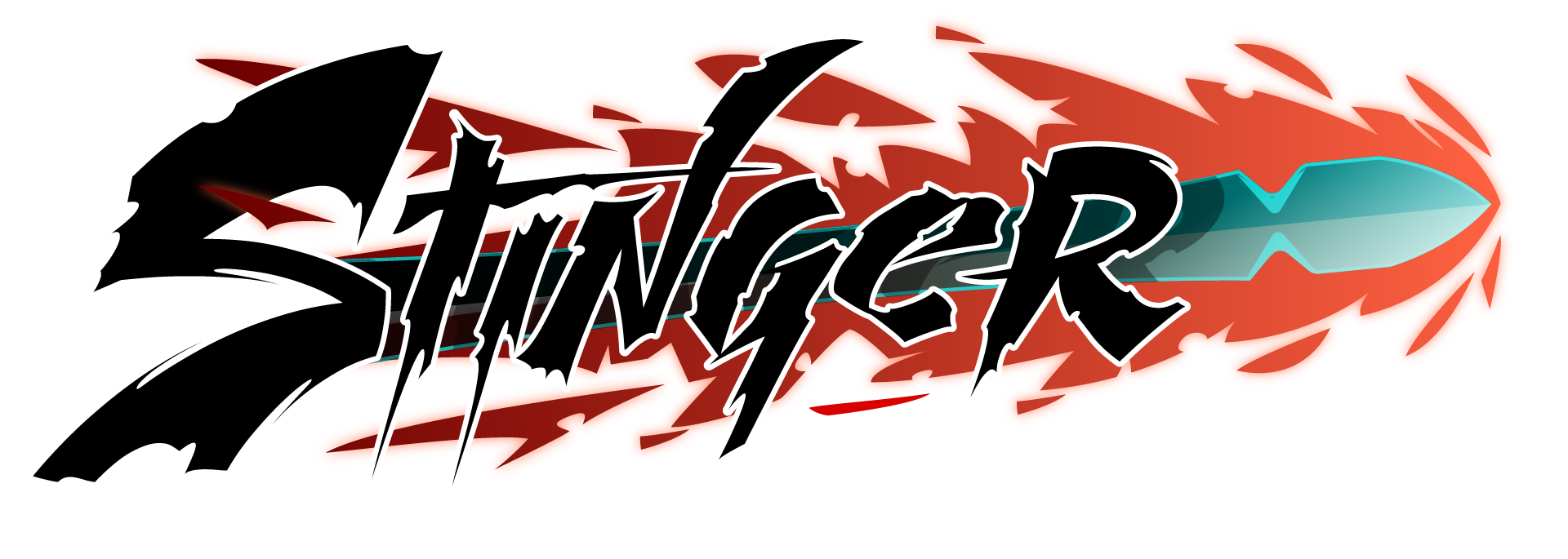




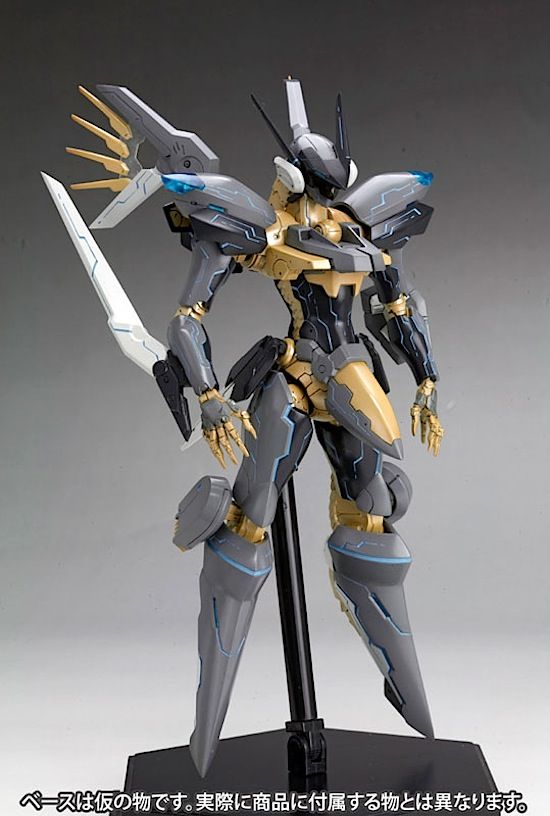

Absolutely amazing article. Bravo. I’ll be back for your next one.
Appreciate the love Jered! Glad you enjoyed it so much 🙂